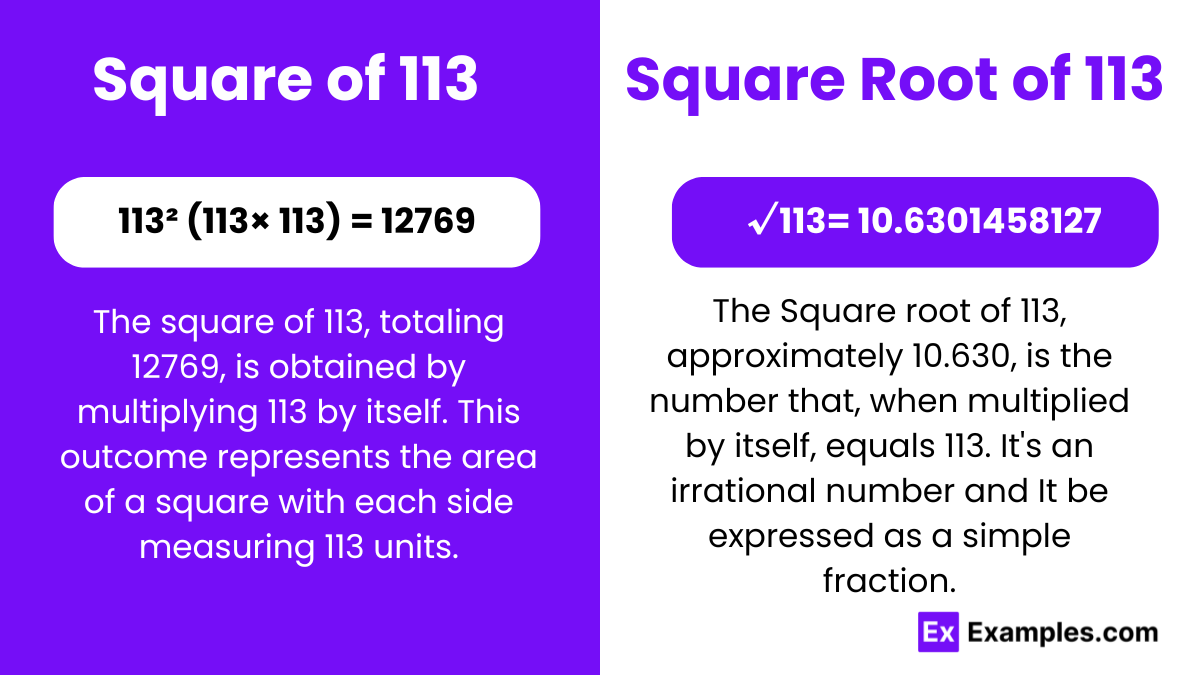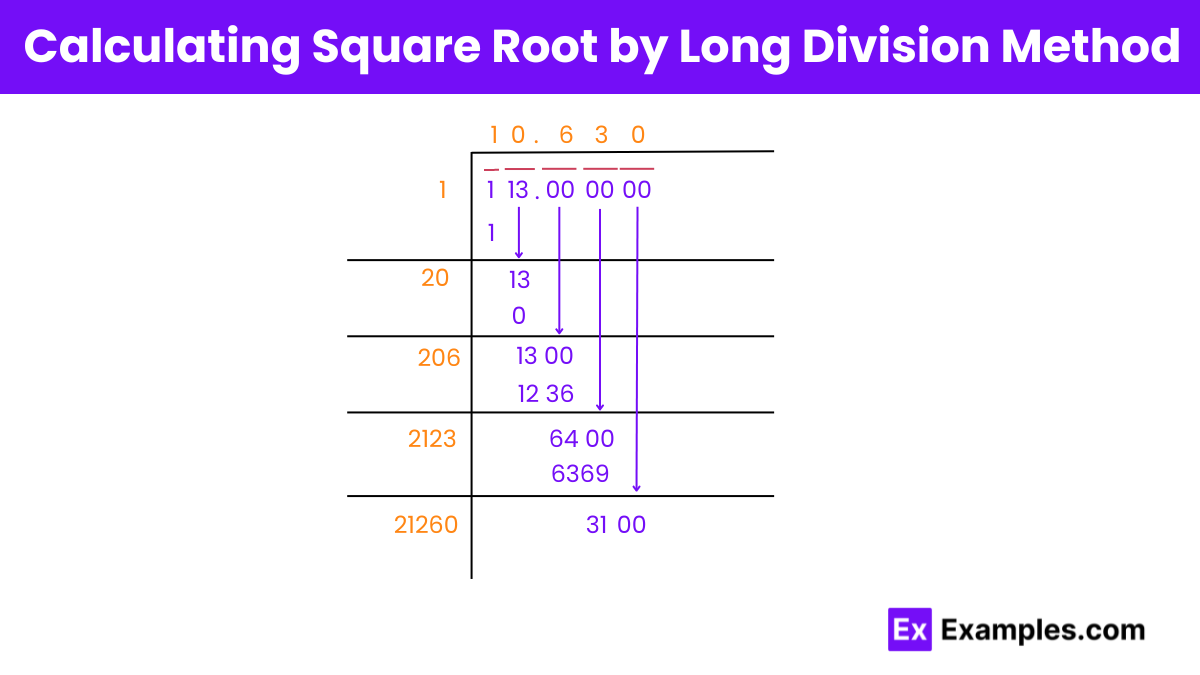What is the square of 113?
12769
12649
11569
12321


The square number of 113 is calculated by multiplying 113 by itself, resulting in 12,769. This square number exemplifies the fundamental concept of squaring in mathematics, showcasing the growth in magnitude when numbers are multiplied by themselves.
The square root of 113, an irrational number, is approximately 10.63014581273465. It represents the number that, when multiplied by itself, equals 113. Understanding square roots illuminates mathematical principles, offering insights into numerical relationships and facilitating problem-solving across various disciplines.
A rational number can be expressed as the quotient of two integers, where the denominator is not zero.
An irrational number cannot be expressed as a fraction of two integers, and its decimal representation is non-repeating and non-terminating.

Step 1: Pair the digits of 113, starting from the one’s place, with a horizontal bar to indicate the pairing.
Step 2: Find the largest number whose square is less than or equal to 1, which is 1.
Step 3: Multiply the quotient by 2 to get the starting digit of the new divisor, which is 2.
Step 4: Place 0 at the one’s place of the new divisor, resulting in 20. The obtained answer is 13, and we bring down 00.
Step 5: Multiply the current quotient (10) by 2 to get 20, the starting digit of the new divisor.
Step 6: Place 6 at the one’s place of the new divisor, resulting in 206. The obtained answer is 64, and we bring down 00.
Step 7: Continue the process of multiplying the current quotient by 2 to determine the next digit of the divisor, and repeat the division until reaching the desired level of accuracy.
A perfect square is a number that can be expressed as the product of an integer with itself e.g.1, 4, 9, 16… Since there is no integer (n) such that (n × n = 113). 113 is not a perfect square.
113 is a prime number, which means it is only divisible by 1 and itself. Therefore, 113 is divisible by 1 and 113.
The factors of 113 are the numbers that divide 113 exactly without leaving a remainder. Since 113 is a prime number, its only factors are 1 and 113.
Text prompt
Add Tone
10 Examples of Public speaking
20 Examples of Gas lighting
What is the square of 113?
12769
12649
11569
12321
What is the approximate square root of 12769?
112
113
114
115
What is the square root of 113 rounded to the nearest whole number?
10
11
12
13
Which of the following is the closest approximation of the square root of 113?
10.5
10.6
10.7
11
If x² = 113, what is the value of x?
10.5
10.6
10.7
11
What is the nearest perfect square to 113?
100
121
144
169
What is the result when 113 is squared?
12769
12649
11569
12421
What is the approximate value of √113 to two decimal places?
10.54
10.63
10.68
10.72
The square of which number is closest to 113?
10
11
12
13
What is the difference between the square of 12 and 11?
21
22
24
25
Before you leave, take our quick quiz to enhance your learning!

